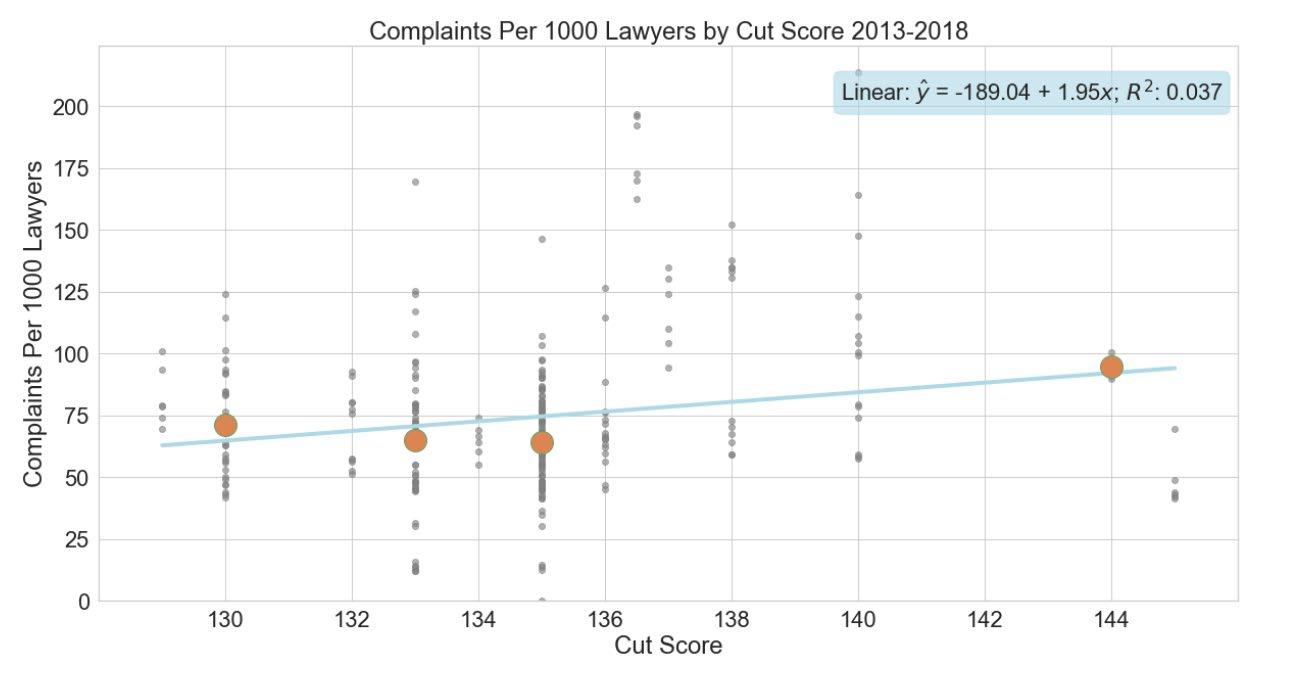
3 minute read
Research Spotlight
An Empirical Study of Bar Exam Cut Scores and Their Impact on Disparities and Diversity in the Legal Profession
Victor D. Quintanilla is a Bicentennial Professor administrations of the California bar exam between 2009 and 2019 (n = 143,198 unique cut score and at simulated cut scores of 1300,
and co-Director of the Center for Law, Society & White (9.0%) gaps in passage rates also existed.
Culture at Indiana University, Maurer School of Law. Dr. Sam Erman is a Professor at the University of Southern California, Gould School of Law. Michael Frisby is a Ph.D. student in the University of Michigan Educational Studies Program.
This research program is being conducted in collaboration with Dr. Nedim Yel, and benefited from helpful conversations with an advisory committee organized by Dean Mitchel Winick of Monterey College of Law and funding from AccessLex Institute.
(“cut score”) is also a choice about the legal profession’s racial and ethnic makeup. That is the finding of our recent empirical study of all California bar exam takers across 11 years of exams, research we plan to publish in future articles and reports. The analysis rests on our unique dataset: all attempts by all applicants across 21 consecutive bar exams taken, including n = 85,727 unique examinees). We determined which examinees during the period passed (or would have passed with the scores they earned) at the actual 1440 1330, 1350, and 1390.
The actual cut score of 1440 produced stark racial and ethnic disparities. Whereas 80.5% of White applicants eventually passed the bar exam during the period, just 53.1% of Black applicants did. Put differently, 46.9% of Black applicants never passed the exam even after repeated attempts, compared to just 19.5% of White applicants. That left a Black/White gap of 27.4%. Large Latinx/White (11.0%) and Asian/ The choice of a bar exam passing score
A lower cut score would have substantially reduced the racial and ethnic impacts of the bar exam, as revealed in the figures below. If California had selected the national median cut score of 1350 in 2009, for example, 89.5% of White applicants and 70.1% of Black applicants would have passed, meaning that the Black/
Figure 1. The Effect of Bar Exam Cut Scores on Racial and Ethnic Disparities
White gap would have closed by nearly 30%. Similar reductions would have occurred in the Latino/White and Asian/White gaps. Setting the cut score at 1300, as some states have done, would have reduced all three gaps by nearly half. The selection of a cut score also impacts the representation of people of color among newly admitted attorneys and, ultimately, cascades to affect their representation in the legal profession. For example, if California had selected a cut score of 1350 in 2009, this change would have resulted in an increase of 753 Black lawyers passing the bar exam across these 11 years of exams, increasing the inflow of newly licensed Black lawyers by 32.1 percent. Combining this inflow of newly licensed Black attorneys with the total number of active Black lawyers in California, we found that the selection of a 1350 cut score in 2009 would have resulted in a 9.9% increase in the total number of Black lawyers in California.
Figure 2. Effect of Bar Exam Cut Scores on Relevant Percent Increase in Racial/Ethnic Representation in the Legal Profession

Within Group Increase in the Legal Profession (Percentage)
Does the selection of a lower cut score harm the public? We next examined whether the selection of an exam cut score correlates with the number of 1) complaints brought by members of the public against attorneys, 2) attorneys formally charged after probable cause determinations, and/or 3) attorneys subjected to discipline in a jurisdiction, collecting this data from publicly available reports of the ABA Survey on Lawyer Discipline Systems. We gathered this data for all jurisdictions included within these reports and across the most recent six years available: 2013 – 2018, and standardized each of these indicators to compare the data across jurisdictions, placing each in the form of per 1,000 attorneys, and treating each state’s annual reporting as a separate observation. Ultimately, we found no significant relationship between the selection of an exam cut score and these three indicators. We observed no correlation between the selection of a cut score and the number of complaints brought by members of the public or the number of attorneys disciplined in that jurisdiction.

What’s next? We will be describing these results in forthcoming publications.
Please submit a summary of your study and findings to RTB@accesslex.org if you would like us to spotlight your bar-related research in a future issue.


